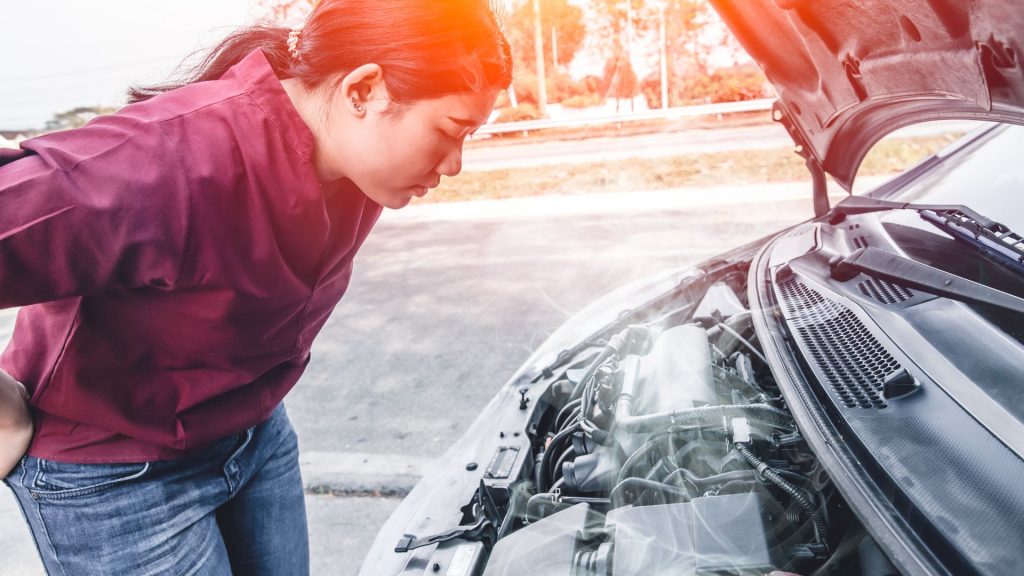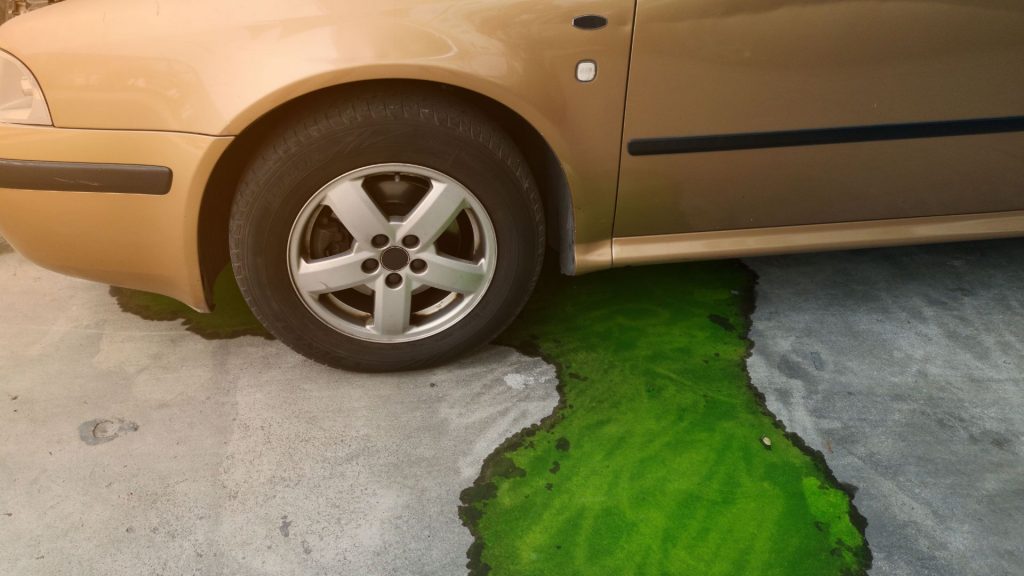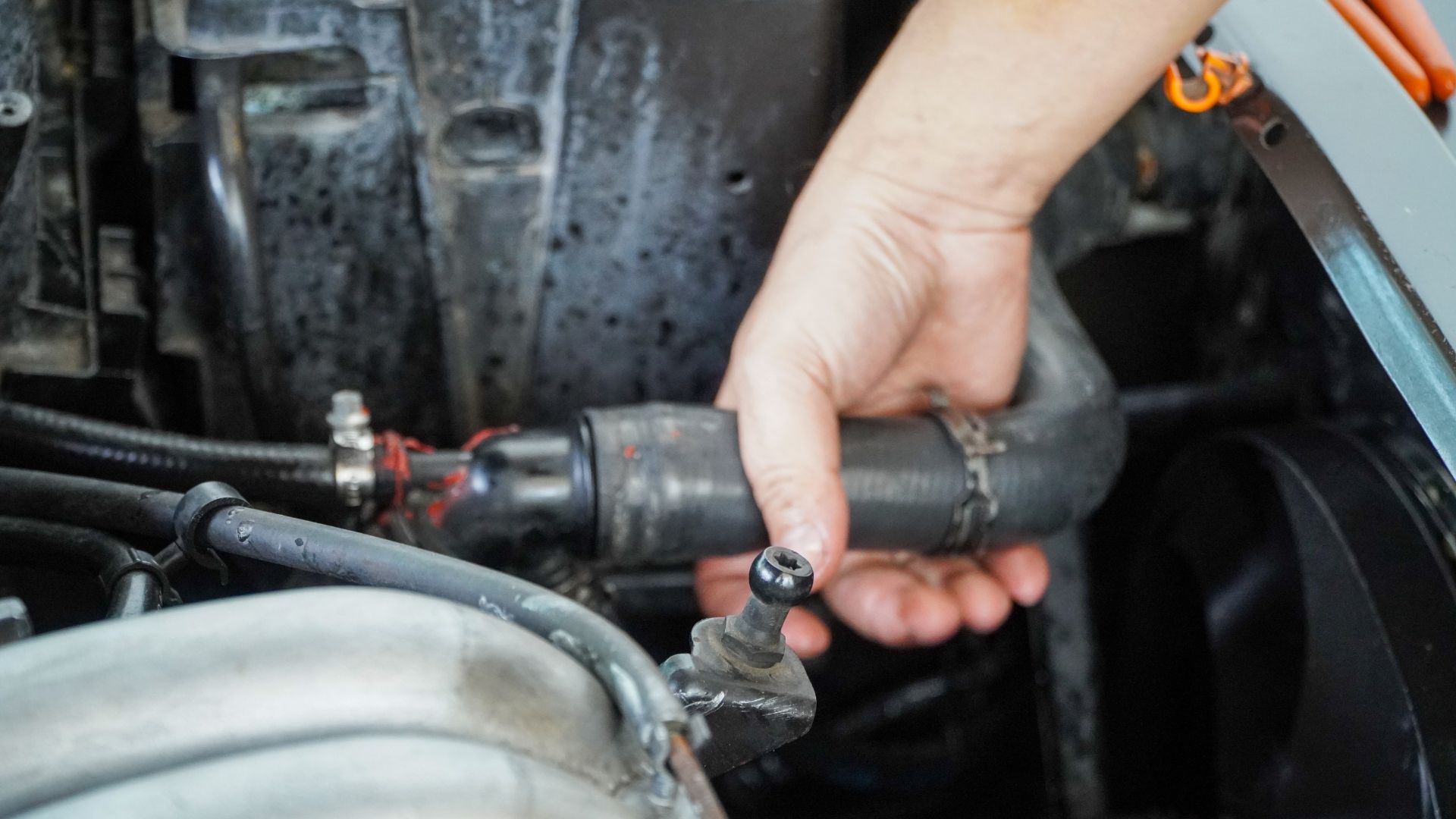Radiator hoses play an important role in your vehicle’s cooling system, where the upper radiator hose, particularly, is responsible for drawing hot coolant from the engine to the radiator.
Is the Upper Radiator Hose Supposed to Be Hard?
When the upper radiator hose is in good working condition, it should be firm and not hard. By performing a squeeze test, you can tell if your upper radiator hose is in good condition.
When your vehicle’s engine is still warm after a short drive, open the hood and squeeze the upper radiator hose, specifically where the hose bends.
If the upper radiator feels firm and not hard, then it is in good condition. However, if the radiator hose feels very hard, brittle, spongy, or soft, you need to replace it as soon as possible.
A hard upper radiator hose indicates that cylinder pressure is entering your vehicle’s cooling system due to a blown or cracked head gasket.
If the engine gets hot after driving for a while, the upper radiator hose will be a bit hard but squeezable. Sometimes you may find only a single soft spot instead of the entire upper radiator hose. If this is the case, you need a professional mechanic to replace the radiator hose immediately.
What Causes Radiator Hoses to Get Hard?
When both radiator hoses are in good condition, they help coolant flow efficiently, thus protecting the engine. However, many car owners rarely consider inspecting or replacing the radiator hoses.
As a car owner, ensuring that the radiator hoses are in good condition will go a long way in preventing extensive damage to your engine and crucial components. The following are some of the main factors that cause radiator hoses to get hard:
Overheating
One of the main reasons your radiator hoses may be hard is that your engine is overheating. Every time your vehicle’s engine overheats, it triggers multiple problems.

For instance, when your engine overheats, it will create hotspots within the combustion chamber, leading to spark knock and other erratic combustion. Your engine will make rattling, knocking, and pinging sounds.
This erratic combustion will increase the engine’s heat and cause the head gasket to blow or break. When this happens, the coolant will start leaking until it reaches a boiling point. As the almost boiling coolant passes through the upper and lower radiator hoses, their pressure will increase.
Since both radiator hoses are designed to handle pressure between 13psi and 18psi, if that pressure exceeds these limits, the hoses will swell and eventually harden like a rock. If these radiator hoses are not replaced on time, they continue to swell until they burst.
The best way to fix this problem is by topping up the engine coolant and replacing the radiator hoses before they burst. You should also verify that the thermostat is functioning correctly.
Excessive pressure
Your vehicle’s cooling system is designed to function under pressure. This pressure carries coolant through the engine and then circulates it through the radiator.
The radiator cap regulates and maintains this pressure at all times. If the radiator cap creates excessive pressure than the radiator hoses can handle, they begin to swell and harden.
As the pressure increases, the radiator hoses will wear out and will eventually break if you do not replace them in good time. Experts recommend replacing swollen and hard radiator hoses as soon as you notice the swelling before they cause excessive damage to the engine components.
Wear
The radiator hoses are under constant pressure. As the engine coolant passes the radiator hoses, they wear out from the inside.
This usually happens even if the hoses appear in good condition from the outside. Once the inside of the radiator hoses is completely worn out, they will harden and swell. This will continue for some time until they burst.
What Happens If I Run With Hard Radiator Hoses?
If you continue driving with hard or swollen radiator hoses, they will eventually burst and cause the engine coolant to leak. Once this happens, the engine will start overheating, which will continue until it fails. With an engine failure, your vehicle will no longer function.
If your vehicle’s engine fails while you are in the middle of the road, you can easily cause an accident that will endanger you and other road users.
How Do I Know If My Radiator Hose Is in Bad/Good Condition?
As mentioned above, a bad radiator hose feels swollen, hard, soft, or brittle when you squeeze it. However, since radiator hoses sit under the hood, you may not notice that they are faulty until it is too late. The following are the most common signs of a bad or failing radiator hose:
Leaking coolant
If you notice a sweet-smelling liquid dripping from underneath your vehicle, it clearly indicates a bad radiator hose. This liquid appears green, blue, purple, or yellow in color, depending on your vehicle’s make or model. The liquid could be from the radiator hose or a faulty radiator.

Due to the numerous possibilities of leaking coolant, it is best to consult a professional mechanic to diagnose the problem. If the radiator hose is the culprit, the mechanic will replace it with a new one.
Overheating engine
Your car’s engine should never overheat. Therefore, if you notice that the engine has suddenly started overheating, it indicates a problem with your vehicle’s cooling system.
Radiator hoses tend to crack and leak over time due to the excessive pressure they deal with regularly. Therefore, they could be the main cause of this problem.
If this is the issue, you must immediately replace the radiator hose to remedy the overheating problem before the engine fails.
Coolant crust formation
If you notice a coolant crust formed around the point where the radiator hose and the engine meet, the hose is likely faulty. This crust usually forms after engine coolant has leaked continuously for a while.
Low engine coolant levels
If you have been refilling your engine coolant regularly and the ‘Low Coolant Light’ still pops up on your dashboard, it indicates leaking.
This leak may be coming from the radiator hose, and you will see it underneath your parked vehicle. Experts recommend checking your engine coolant level before driving your car.
If the coolant leaks from a bad radiator hose, you will deal with more severe problems such as an overheating engine, blown head gasket, or a damaged engine.
Broken radiator hose
The radiator hose can break in different ways. Experts recommend regularly inspecting the radiator hoses for any leaks, swelling, soft spots, or cracks. If you notice any of these defects, it is a sign that your radiator hose is broken, and you need to replace it immediately.
How to Fix a Hard Radiator Hose?
If you notice a hard radiator hose, you should replace it immediately before it triggers overheating and engine failure. You can do this yourself, or you can call an experienced mechanic. If you decide to replace the hard radiator hose yourself, follow these steps:
- Ensure that the engine properly cools down.
- Once the engine cools down, you can now open the radiator cap and then drain the engine coolant.
- Proceed to loosen the radiator hose clamps, remove the hard hose and attach the new one.
- Refill the radiator.

